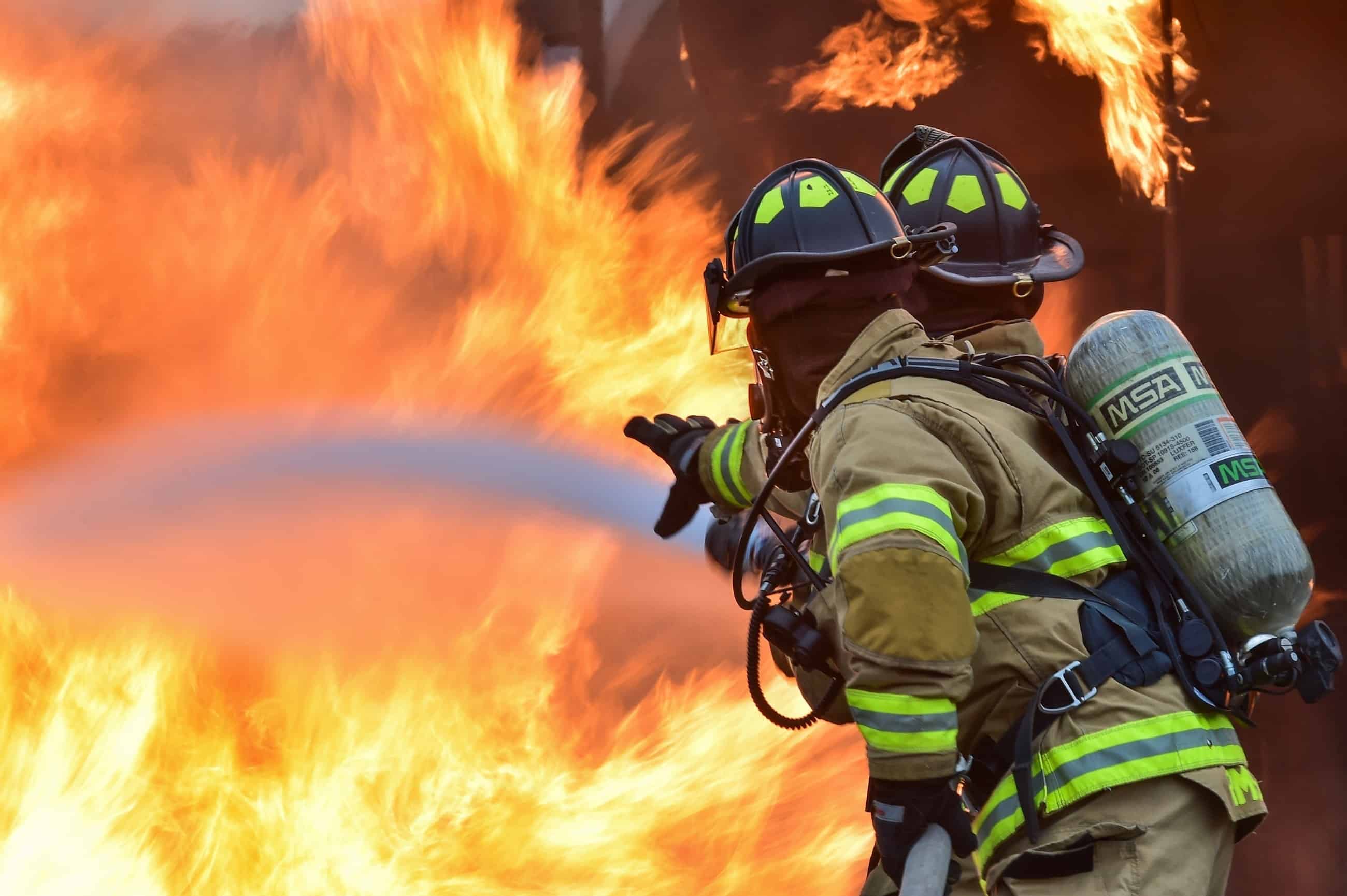
The fire sprinkler is a standard item in most office buildings, hotels, and other public places. However, what is a fire sprinkler? How do they work? What are the different types of commercial systems and what types of sprinklers are available for residential use? Moreover, what about those hand-held fire extinguishers?
It can seem overwhelming when learning about why it is important to have a sprinkler system on your property in addition to handheld extinguishers, because there are many types of commercial and residential fire sprinklers systems out there. You will find traditional overhead sprinklers, as well as other fire suppression systems, for both home and commercial use.
Here we’ll look at: what causes a fire, what happens when you remove one leg of the Fire Triangle, commonly installed fire suppression systems, and what causes a fire sprinkler to activate. We will also look at the various agencies that work with fire control systems and the inspections of installed fire control systems.
How Fire Functions

So, what causes a fire? A fire occurs when there is rapid oxidation of a material. Oxidation occurs when oxygen is introduced to the material at high temperatures on a molecular level. When the oxygen bonds to the material and catches on fire after heat is applied, this is the ignition point.
The Fire Triangle is a commonly referred to formula for starting a fire. The triangle consists of Heat, Oxygen, and Fuel. When these three conditions are met, a fire occurs. When you take away one of the legs of the triangle, the fire will cease to operate–the easiest one to remove is heat. The second easiest to remove is oxygen. The material is often the hardest leg to remove in an attempt to extinguish a fire. The material is what we use to classify fire extinguisher systems. The classes are measured alphabetically as A, dry materials like paper and wood, B, liquid and gasses like gasoline, C, electrical outlets and computer equipment, and D, metals like magnesium and cesium.
Fire suppression systems – from sprinklers to handheld extinguishers – all require training, record keeping, and maintenance.
We now know the Fire Triangle is the formula for making a fire. We are aware removing one of the legs is the method to extinguish a fire. The easiest one to remove is heat. Enter the commercial fire sprinkler.
How Fire Sprinklers Work

We often see the sprinkler heads in public places or offices where we work. However, how do they work? Do they all go off at once like in the movies? Well, not quite. They are individual heads on a parallel water circuit designed to extinguish fires in localized areas as a fire occurs. They are activated by heat, not by smoke or fire alarms. As the fire begins to heat the surrounding area and the flames reach higher, they melt a solder holding a cap on the sprinkler water outlet. The solder consists of low melting metals such as lead and bismuth. Once the metal has melted the water pressure unseats the cap, and voila, water sprays the surrounding area and cools the material burning to below the ignition point, putting the fire out.
Because they are relatively inexpensive to install and operate, fire sprinklers are by far the most popular system in commercial buildings. Heat can also be removed using handheld extinguishers of various agents, such as CO2 and water, to extinguish a fire based on the class of material burning.
How Fire Extinguishers Work

Removing oxygen is how most hand-held extinguishers operate. They stop the chemical reaction of the Fire Triangle. Dry chemical and Halon gas are the most popular types of oxygen-removal extinguishers. Dry chemical extinguishers expel a series of chemicals that form a powder covering the material blocking oxidization. This is a messy endeavor that often requires a clean-up. Dry chemical is not recommended for confined spaces or where you do not want items covered in the chemical powder. Halon is a gas designed to remove the oxygen surrounding a fire, which, in turn, will reduce the heat by stopping the material from absorbing more oxygen and allowing the fire to continue burning. This type of extinguisher is popular in confined areas such as aircraft engine bays and commercial vehicles where the quick extinguishing of fire is essential.
Modern Fire Suppression
Today’s fire sprinkler systems and hand-held extinguishers are of an older design that can’t be beaten. In the 1870s Henry S. Parmelee of New Haven, Connecticut, had a piano company he wanted to protect from fire and was credited with having the first building in America equipped with an automatic fire suppression system and automatic sprinkler head. These systems still require maintenance and are now updated with various sensors and control panels. Excellent record keeping of fire control systems is vital to any business operating with a fire suppression system installed, ensuring manufacture maintenance interval tasks are met will keep your system in working order.
Fire safety is an important aspect of everyday business and residential life. The National Fire Protection Agency (NFPA) sets standards and code requirements for fire suppression equipment and building layout for fire emergencies. Fire suppression systems–from sprinklers to handheld extinguishers–all require training, record keeping, and maintenance. Knowing how to exit in case of a fire and the location and operation of equipment are essential for safety in the workplace and home. The operation of fire suppression systems is a finely tuned machine that will protect your assets and limit the damage caused by fires. These systems will last a long time with proper care and attention to manufacturing recommendations.

